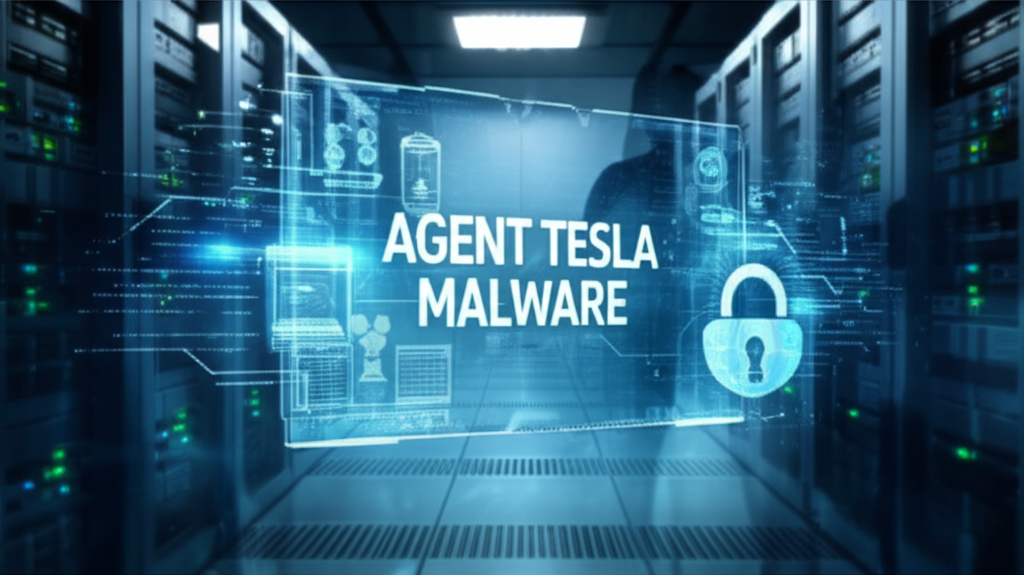Agent Tesla Malware: A Deep Dive into its Operations and Prevention
Understanding Agent Tesla Malware: A Persistent Threat
In the evolving landscape of cyber threats, Agent Tesla malware stands out as a persistent and versatile information stealer and Remote Access Trojan (RAT). First identified around 2014, it has continuously adapted and remains a significant danger to individuals and organizations worldwide. This detailed article explores Agent Tesla’s capabilities, distribution methods, and crucial prevention strategies.
What is Agent Tesla Malware?
Agent Tesla is a commercially available malware often marketed as a legitimate remote monitoring tool, though its primary use is malicious. It is an advanced form of infostealer and Remote Access Trojan (RAT) written in .NET. Its appeal to threat actors lies in its extensive feature set and its low cost, making sophisticated cyberattacks accessible to a broader range of malicious actors.
How Agent Tesla Operates: Its Malicious Capabilities
Once Agent Tesla successfully infiltrates a system, it initiates a series of actions designed to compromise data and maintain persistence. Its capabilities include:
- Information Theft: It targets sensitive data from web browsers (credentials, autofill data), email clients (Outlook, Thunderbird, Foxmail, etc.), FTP clients, and other applications.
- Keylogging: Records every keystroke made by the user, capturing passwords, credit card numbers, and other confidential information typed into the system.
- Screenshot Capture: Periodically takes screenshots of the infected system, providing attackers with visual insights into user activities.
- Webcam/Microphone Access: Some variants have been observed attempting to access the system’s webcam and microphone, enabling surveillance.
- Clipboard Monitoring: Steals data copied to the clipboard, which often includes sensitive information.
- System Information Gathering: Collects detailed information about the infected machine, including operating system version, hardware details, and running processes.
- Remote Command Execution: As a RAT, it allows attackers to execute commands on the compromised system remotely, giving them significant control.
Common Distribution Methods
Agent Tesla predominantly spreads through highly effective social engineering tactics, often exploiting human vulnerabilities. Common distribution vectors include:
- Phishing Emails: The most prevalent method, where emails masquerade as legitimate communications (e.g., shipping notifications, payment invoices, job applications, business inquiries). These emails contain malicious attachments (often ZIP, RAR, ISO, or IMG files containing executables) or links to compromised websites.
- Malvertising: Malicious advertisements that redirect users to pages hosting exploit kits or directly downloading the malware.
- Drive-by Downloads: Unintentional downloads of malicious code or software onto your computer without your knowledge.
- Exploiting Software Vulnerabilities: Less common but possible, where the malware takes advantage of unpatched vulnerabilities in software or operating systems.
“Agent Tesla’s continuous evolution and adoption of new evasion techniques ensure its ongoing relevance in the threat landscape, making robust endpoint security solutions indispensable.”
Impact and Consequences
The consequences of an Agent Tesla infection can be severe:
- Financial Loss: Direct theft of banking credentials, credit card information, leading to unauthorized transactions.
- Identity Theft: Stolen personal data can be used for identity fraud.
- Corporate Espionage: Compromise of sensitive business data, intellectual property, and trade secrets.
- Further Compromise: Stolen credentials can be used to access other accounts or systems, escalating the attack.
- Reputational Damage: For businesses, a breach can severely damage customer trust and brand reputation.
Detection and Prevention Strategies
Protecting against Agent Tesla requires a multi-layered approach combining technology, vigilance, and best practices:
1. Implement Robust Endpoint Security
- Antivirus/Antimalware: Use reputable, up-to-date antivirus and endpoint detection and response (EDR) solutions that can detect and block known Agent Tesla variants.
- Firewall: Configure firewalls to block unauthorized outbound connections and filter malicious traffic.
2. Foster User Awareness and Education
- Phishing Training: Educate employees and users about identifying phishing attempts, suspicious attachments, and malicious links.
- Verify Senders: Always scrutinize email senders, especially for unexpected attachments or urgent requests.
3. Maintain System Hygiene
- Software Updates: Regularly update operating systems, web browsers, and all software to patch known vulnerabilities that malware could exploit.
- Strong Passwords and MFA: Use strong, unique passwords for all accounts and enable Multi-Factor Authentication (MFA) wherever possible.
- Regular Backups: Maintain regular, encrypted backups of critical data in an offline or isolated location.
4. Network Security Measures
- Email Filtering: Implement advanced email filtering solutions to detect and block malicious attachments and links before they reach user inboxes.
- Network Monitoring: Monitor network traffic for unusual activity or outbound connections to known Command and Control (C2) servers.
Conclusion
Agent Tesla Malware remains a persistent and evolving threat, leveraging sophisticated tactics to steal valuable information. Its adaptability means that effective defense requires continuous vigilance, advanced security tools, and well-informed users. By understanding its mechanisms and adopting a proactive cybersecurity posture, individuals and organizations can significantly reduce their risk of falling victim to this pervasive infostealer and RAT.







